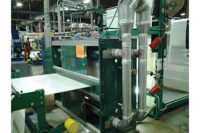I hear many salespeople complain that their product has become commoditized. This can be one of those “perception equals reality” traps; that is, if you believe your product or service is a commodity, then you are helping to make it a commodity.
So what is a commodity? Many definitions are possible and can change in context; for our purposes, let’s assume commodities are products or services where the customer enjoys freedom of choice with little negative impact by switching suppliers. In essence, price is controlled by the buyer. This condition pushes price discussions to the forefront, and competing suppliers engage in a race to the bottom, gutting the business of profit.
How do you avoid becoming a commodity or create enough valuable differentiation that you can earn more profit? The customer, or at least the buyer, benefits when you think your product is a commodity. Talking to the actual users of your product will tell you things a buyer might not want you to know. If you are supplying a component to a formula, changing the source of the raw material may change the reaction due to slight chemical or physical form differences. If you supply an adhesive to a manufacturer, changing adhesives can have big impacts on dispensing, curing, substrate interaction, and more. Unless that customer can trace a failed assembly all the way back to which adhesive was used at the time, they may never be able to finish a root cause analysis.
These are all costs and risks that can negate price reductions negotiated with purchasing. Speaking with the actual users provides other insights, even if your product can be freely substituted with a competitor’s product. To get the best price, we typically drive customers to buy the biggest package in the biggest quantity they can absorb. This can lead to product shelf-life issues, difficulty handling the larger packaging (e.g., drum handling vs. pails), waste due to internal repackaging, and loss of lot tracking capability.
In chemical businesses, waste reduction represents a tremendous opportunity for value addition beyond the obvious environmental consideration. On many occasions, I have had companies tell me that disposing of a product costs more than buying the product in the first place. Working with the customer to “right size” your product to their needs increases your value and puts your competitors in catch-up mode. Your solution may present a situation that your competition cannot or will not compete with because of their organizational structure.
In my first sales position out of college, I sold a true commodity chemical used in industrial processes. My competition in this arena was also my supplier; thus, I did not have much pricing control. Working at a small company, I was responsible for managing the delivery schedules of our union truck drivers in the region. Efficient use of those resources could make the difference between a good month and a bad month. Trucks returning with residual material in their tanks continually frustrated me. As an experiment, I approached a very large user sold by my competitor/supplier and asked if I could have my trucks empty there at the end of their delivery runs. I was prepared to work on very skinny margins, but I was surprised to learn that to get the best price, they constantly ran the risk of running out of material because they had to take a full tanker load. A tanker used almost all of their storage capacity. Running out of product incurred huge losses in downtime and restart costs. In the end, we negotiated a 20% increase in price for a guarantee that they would never run out and my company would manage the inventory. The competition did not have the infrastructure to compete with this arrangement. My need drove me to have a conversation about my customer’s needs that I should have had in the first place.
The simple lesson is that you must be talking to the people who actually use your offering. If you are a facilitator in commoditizing your product or service, then you are also facilitating your own job elimination. As margins erode, the cost of your position will rightfully draw scrutiny. Management may first increase the size of territories or look to other markets, but once commoditized, the incremental value of additional customers declines, too. Before you know it, management will have figured out that a website with technical data and ordering information is all they need.
Any views or opinions expressed in this column are those of the author and do not represent those of ASI, its staff, Editorial Advisory Board or BNP Media.



